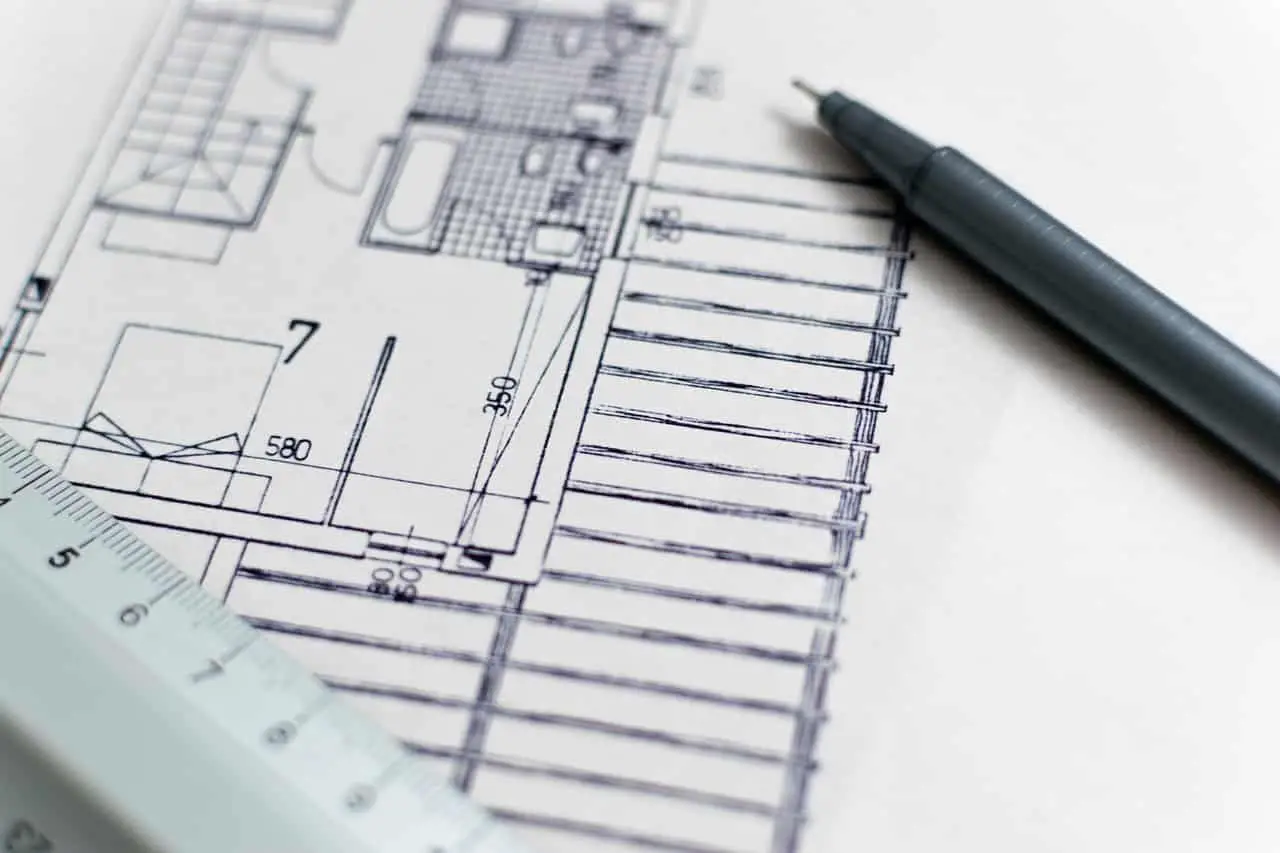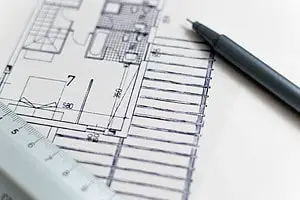Architecture is an interdisciplinary field that requires a multifaceted skill set. On one hand, architects must have a strong foundation in theory, with a comprehensive understanding of design principles, construction techniques, and engineering fundamentals. On the other hand, they must also possess practical skills, such as the ability to communicate effectively with clients, manage projects, and navigate the complexities of the construction industry.
Unfortunately, the gap between theory and practice in architectural education has long been a point of contention, with many students feeling ill-prepared for the real-world challenges they will face in their careers.
To address this issue, architecture programs around the world are increasingly incorporating hands-on experience programs into their curricula. These programs provide students with the opportunity to apply their theoretical knowledge in a practical setting, gaining valuable experience and skills that will serve them well in their future careers.
In this article, we will explore the importance of a well-rounded education in architecture, the gap between theory and practice in architectural education, and the benefits of hands-on experience programs in bridging that gap. We will also examine examples of successful hands-on experience programs and real-world collaborations, as well as the future of architectural education.
Key Takeaways
- The gap between theory and practice in architectural education is a point of contention, with many students feeling ill-prepared for real-world challenges.
- Hands-on experience programs can play a vital role in bridging the gap between theory and practice and preparing students for successful careers.
- Successful programs integrate hands-on experience with theoretical education in architecture.
- Interdisciplinary collaboration and community engagement are opportunities for addressing challenges and shaping the future of architectural education.
The Importance of a Well-Rounded Education in Architecture
A well-rounded education in architecture is crucial for producing competent professionals who can effectively address the multifaceted challenges of the built environment. Architecture is a profession that requires a broad range of knowledge and skills, including design, construction, history, theory, and technology.
While practical skills are essential, a comprehensive understanding of architectural theory and history is also necessary for creating meaningful and sustainable buildings.
A well-rounded education in architecture provides students with a deep understanding of the social, cultural, and environmental contexts in which buildings are constructed. It also equips them with critical thinking skills, which are essential for analyzing complex problems and developing innovative solutions.
By studying architectural history and theory, students learn about the evolution of architectural styles, the social and cultural factors that shape the built environment, and the role of architecture in shaping societies. This knowledge helps them to develop a holistic perspective on architecture and to appreciate the importance of designing buildings that are responsive to the needs of the people who use them.
The Gap Between Theory and Practice
The gap between theory and practice in architecture has long been a topic of discussion in academic circles. It presents numerous challenges for students, who must navigate the complexities of a multifaceted profession that requires both technical expertise and creative thinking.
At the same time, the realities of the profession itself can be quite different from what is taught in the classroom, further complicating the process of bridging the gap between theory and practice.
Understanding these challenges is essential for ensuring that students receive a well-rounded education in architecture.
Challenges Faced by Students
Students pursuing architecture often encounter a myriad of challenges as they navigate through the rigorous academic program. One of the primary challenges faced by students is the inability to bridge the gap between theory and practice. The theoretical curriculum in architecture schools tends to be heavily focused on design principles and theory, which can make it difficult for students to understand how to apply these concepts in real-world scenarios. This lack of practical application can lead to a disconnect between students’ academic knowledge and their ability to execute designs in the field.
Another challenge faced by architecture students is the demanding workload and time constraints. Architecture programs often require students to work on multiple projects simultaneously, which can be overwhelming and stressful. Additionally, the nature of the field requires a significant amount of time and effort to be spent on each project, leaving little time for other coursework or personal activities. This can result in an unbalanced lifestyle, which can lead to burnout and decreased academic performance.
Overall, architecture students must be prepared to face these challenges and find ways to bridge the gap between theory and practice while managing their workload effectively.
Realities of the Profession
Exploring the realities of the architecture profession reveals the multifaceted nature of the field and the diverse skills required for success. It is not just about designing buildings, but also about managing projects, communicating with clients, negotiating contracts, and collaborating with other professionals. In addition, architects must keep up with the latest technologies, regulations, and environmental standards, and be able to adapt to changing conditions and expectations.
Therefore, a well-rounded education in architecture should not only focus on the theoretical aspects of design, but also on the practical aspects of the profession.
To bridge the gap between theory and practice in architecture education, students need to be exposed to the following four realities of the profession:
-
Architecture is a business as well as an art. Architects need to have basic business skills, such as budgeting, marketing, and networking, in order to succeed in the competitive market.
-
Architecture is a collaborative process. Architects need to work with other professionals, such as engineers, contractors, and clients, to achieve their goals.
-
Architecture is a social responsibility. Architects need to take into account the social, cultural, and environmental impact of their designs, and be able to address the needs and aspirations of diverse communities.
-
Architecture is a lifelong learning process. Architects need to stay current with the latest trends, techniques, and technologies, and be able to adapt to new challenges and opportunities throughout their careers.
Hands-On Experience Programs
Hands-on experience programs provide a valuable opportunity for aspiring architects to develop their practical skills and gain real-world experience. These programs offer opportunities for students to work on real projects, collaborate with professionals, and gain a deeper understanding of the various aspects of the profession.
Through hands-on experience, students can learn how to work with clients, contractors, and other stakeholders, as well as gain practical knowledge of construction techniques, materials, and building codes.
In addition to building practical skills, hands-on experience programs can help students develop a well-rounded education by exposing them to a variety of design and construction approaches. These programs often offer opportunities to work on projects with different types of structures, such as residential, commercial, and industrial buildings, as well as projects with unique design challenges, such as historic preservation and sustainability.
Through these experiences, students can develop a broader perspective on the profession and gain a deeper appreciation for the complexities of architectural design and construction.
Benefits of Hands-On Experience Programs
Participating in hands-on experience programs can provide a unique opportunity for individuals to gain practical knowledge and real-world experience in the field of architecture. These programs offer several benefits that can complement theoretical education and equip students with a well-rounded skillset.
Firstly, hands-on experience programs allow students to develop problem-solving skills and learn how to overcome challenges that arise in real-world scenarios. This type of practical experience can be invaluable in a field like architecture, where projects often face unforeseen obstacles that require creative solutions.
Secondly, hands-on experience programs provide students with the opportunity to work collaboratively with others. In architecture, teamwork is essential, and students who participate in hands-on experience programs can learn how to communicate effectively with others and work towards a common goal.
Additionally, participating in these programs can help students build a professional network and make connections with industry professionals. This can be especially beneficial for those who are just starting their careers and looking to gain experience and make a name for themselves in the field.
Overall, hands-on experience programs can play a vital role in bridging the gap between theory and practice and preparing students for successful careers in architecture.
Examples of Successful Hands-On Experience Programs
Several institutions have successfully implemented programs that integrate hands-on experience with theoretical education in the field of architecture.
One example is the Design-Build Studio at the University of Kansas, where students work with faculty members to design and construct community projects such as a farmers market pavilion and a community center. The program allows students to apply their knowledge in a real-world setting, while also developing skills in project management, construction, and teamwork. The Design-Build Studio has received multiple awards and recognition for its innovative approach to architectural education.
Another successful program is the Integrated Path to Architectural Licensure (IPAL) at the University of North Carolina at Charlotte. IPAL enables students to earn their professional architecture license while pursuing their degree. The program incorporates practical work experience, allowing students to work with architectural firms and gain hands-on experience in the field. IPAL not only provides students with a well-rounded education, but also prepares them for a successful career in architecture. In 2018, the program received the NCARB Award for Creative Integration of Practice and Education in the Academy.
These examples highlight the importance of integrating hands-on experience with theoretical education in architecture, leading to a more well-rounded education and better-prepared professionals in the field.
Real-World Collaborations
Collaborations with professionals and industry leaders provide architecture students with invaluable opportunities to apply their knowledge in real-world settings and gain practical experience. These collaborations take various forms, such as internships, design-build projects, and community outreach programs.
In internships, students work alongside experienced architects and engineers in their firms, participating in design meetings, site visits, and construction inspections. They learn to use software tools, such as AutoCAD and Revit, to create drawings and models, as well as to communicate with clients and contractors. They also gain insight into the business side of architecture, such as project management, budgeting, and marketing.
In design-build projects, students work in teams to design and construct buildings, from concept to completion. They collaborate with contractors, suppliers, and regulatory agencies to ensure that the project meets the needs of the client and complies with local codes and standards. They also learn hands-on skills, such as carpentry, masonry, and electrical wiring, which are essential for understanding how buildings are put together.
Finally, in community outreach programs, students engage with local residents and organizations to identify their needs and propose solutions that are sustainable, affordable, and culturally sensitive. They learn to communicate their ideas effectively, to work in diverse teams, and to respect different perspectives and values.
Overall, these collaborations provide architecture students with a well-rounded education that prepares them for the challenges and opportunities of the profession.
The Future of Architectural Education
The future of architectural education is a topic that has garnered significant attention in recent years.
This discussion centers on both the trends and innovations that are shaping the field, as well as the challenges and opportunities that are emerging.
As technology continues to advance and the demands placed on architects evolve, it is essential for architectural education to adapt and prepare students for the demands of the profession.
Trends and Innovations
Innovations in architectural education are continuously emerging, allowing students to explore new trends and advance their skills beyond the traditional curriculum.
One of these trends is the integration of technology into the educational process. With the advent of 3D printing, virtual reality, and other digital tools, students can now create realistic models and simulations of their designs, enabling them to test their ideas in a more realistic manner. Moreover, digital tools can also aid in the exploration of complex geometries and structures that were previously difficult to study using traditional methods.
Another emerging trend in architectural education is the increased focus on sustainability and environmental design. As the world becomes more conscious about the impact of buildings on the environment, architecture schools are increasingly incorporating sustainable design principles in their curriculum. This includes topics such as passive design strategies, renewable energy systems, and materials with low environmental impact.
By integrating these principles into their designs, students can create buildings that are not only aesthetically pleasing but also environmentally responsible. As the demand for sustainable design continues to grow, it is crucial that architectural education keeps up with the latest trends and innovations to ensure that students are well-equipped to tackle the challenges of the future.
Challenges and Opportunities
A major challenge facing contemporary architectural education is the need to adapt to a rapidly changing world where technological advancements and environmental concerns are reshaping the field. As such, educators must find ways to bridge the gap between theory and practice to provide students with a well-rounded education that prepares them for the demands of the profession.
One opportunity to address this challenge is through interdisciplinary collaboration, where architecture students work alongside those in engineering, environmental science, and other related fields. This approach allows for a more holistic education that incorporates various perspectives and promotes problem-solving skills.
Additionally, the integration of technology into the curriculum can provide students with practical skills and knowledge that can be applied in real-world scenarios.
Finally, providing opportunities for students to engage with the community through service-learning projects can help them develop a sense of social responsibility and a deeper understanding of the impact of their work on society.
Frequently Asked Questions
What are the most common challenges faced by architecture students when transitioning from theory to practice?
Architecture students often face challenges when transitioning from theory to practice. Some of the most common challenges include the lack of practical knowledge and experience, difficulty in applying theoretical concepts to real-world situations, and the need to adapt to different working environments.
Students who have only studied in a classroom setting may struggle to understand the complexities of the design process, which involves collaboration with clients, contractors, and other stakeholders. Additionally, they may have difficulty in navigating the legal and regulatory requirements of the profession.
To bridge this gap, architecture schools must provide opportunities for students to gain practical experience through internships, apprenticeships, and hands-on projects. This will not only prepare students for the challenges of the profession but also help them develop a well-rounded education that combines theory and practice.
How can architecture schools ensure that students receive a well-rounded education that prepares them for the realities of the profession?
To ensure that architecture students receive a well-rounded education that prepares them for the realities of the profession, architecture schools can adopt various measures.
Firstly, they can provide students with practical exposure to the profession through internships, design studios, and workshops. This can help students understand the challenges and demands of the profession and develop skills that are critical for success in the field.
Secondly, schools can focus on developing a curriculum that integrates theory and practice, which can help students develop a deeper understanding of the profession and its role in society. Additionally, schools can invite industry professionals to share their experiences and insights with students, which can provide them with a broader perspective on the profession.
Finally, schools can encourage students to participate in extracurricular activities such as competitions, conferences, and exhibitions, which can help them develop their creativity, critical thinking, and communication skills.
By adopting these measures, architecture schools can ensure that their students receive a well-rounded education that prepares them for the realities of the profession.
How do hands-on experience programs benefit architecture students and prepare them for the workforce?
Hands-on experience programs benefit architecture students by providing them with practical skills and knowledge that are essential for success in the workforce. These programs offer opportunities for students to work on real-world projects, collaborate with professionals, and gain exposure to different design techniques and technologies.
By engaging in hands-on activities such as building models, conducting site visits, and participating in design competitions, students develop critical thinking, problem-solving, and communication skills that are transferable to their future careers. Moreover, such programs help students to bridge the gap between theory and practice, enabling them to apply the concepts they have learned in the classroom to real-life situations.
Overall, hands-on experience programs are an essential component of a well-rounded architecture education, as they prepare students for the challenges and opportunities of the profession.
Can you provide examples of hands-on experience programs that have proven successful in bridging the gap between theory and practice?
Hands-on experience programs have proven successful in bridging the gap between theory and practice in architecture education.
One example is the Integrated Path to Architectural Licensure (IPAL) program, which allows students to simultaneously complete their academic coursework and get practical training, as well as sit for the licensure exam.
Another example is the Design-Build Studio, which brings together students, faculty, and professionals to collaborate on real-world projects, such as designing and constructing community buildings.
These programs provide students with valuable opportunities to apply their theoretical knowledge to practical situations and develop important skills, such as communication, teamwork, and problem-solving.
By integrating these programs into their curriculum, architecture schools can provide their students with a well-rounded education that prepares them for the workforce.
What changes can we expect to see in the future of architectural education, and how will these changes impact the way students are trained for their careers?
The future of architectural education is likely to see changes in response to various factors such as technological advancements, globalisation and environmental concerns. These changes will impact the way students are trained for their careers by incorporating interdisciplinary and experiential learning approaches.
For instance, students may be taught to integrate digital tools and building information modelling (BIM) into their design processes. Additionally, there may be a greater emphasis on sustainable and resilient design practices, as well as collaborative and community-based projects.
Such changes are expected to produce well-rounded graduates who can navigate the complexities of the built environment, and contribute to the shaping of a sustainable and equitable future.
Conclusion
Architectural education plays a crucial role in shaping the future of the built environment. A well-rounded education must bridge the gap between theoretical knowledge and practical experience.
This article has provided an overview of the importance of hands-on experience programs in architectural education. Such programs offer students an opportunity to apply theoretical knowledge to real-world situations, develop critical thinking skills, and foster creativity and innovation. Successful hands-on experience programs such as the Design Build program at Rural Studio and the Building Project at Yale School of Architecture are examples of how academic institutions can provide students with practical experience.
Collaborations with industry professionals also offer opportunities for students to gain real-world experience. The future of architectural education lies in integrating theoretical knowledge with practical experience. The industry demands graduates with both technical skills and creative problem-solving abilities.
By bridging the gap between theory and practice, academic institutions can equip students with the skills needed to tackle real-world challenges and shape the future of the built environment.









































































